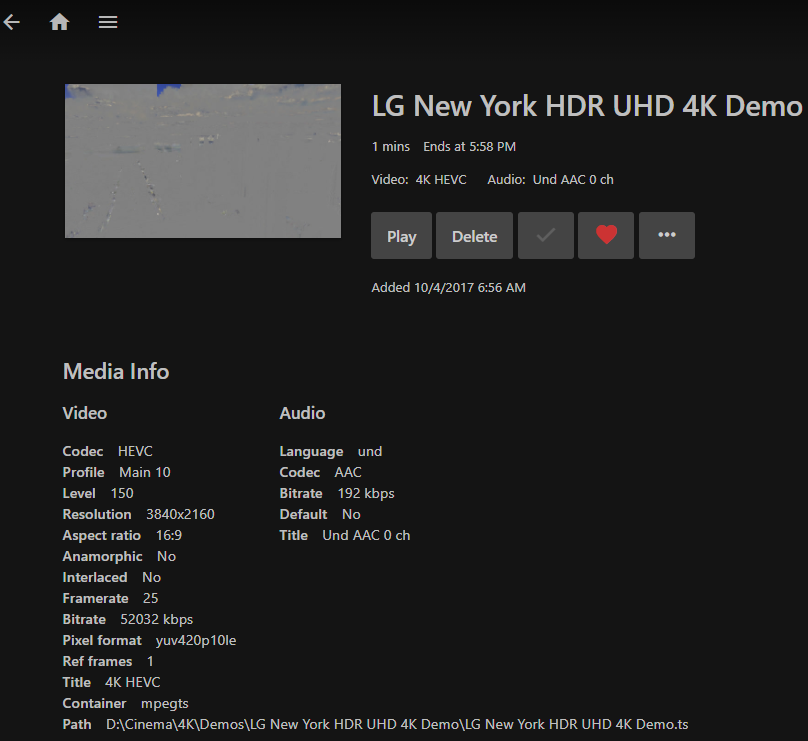

With media server software like Emby and Plex, one can have a much more colorful audiovisual experience.Īfter acquiring the basic knowledge of Plex and Emby, let's delve deeper into their differences in the following Emby vs. It's a bit like DIY your own version of Netflix. And you own them forever with free access to the content anytime, anywhere. That means you can curate any content you like, say, rare old songs, 4K movies, family photos, and anything you cannot get from the online streaming services, to your media database. Well, put emphasis on the word “personal”. You might argue what's the point of creating a media library when the likes of Netflix, HBO, Amazon, Hulu, Disney + are available for convenient media streaming. The two software is now commonly used to build one's personal media library. Plex and Emby, on the other hand, are client-server media players to stream videos, music, photos to your client devices both locally and remotely (the Internet is required). BTW, Emby was developed from Plex when Plex decided to go closed-source. Kodi is a media player to play your local media files primarily (the Internet is not needed). Yet, in effect, they serve quite different purposes. For example if /mnt/media_files does not exist systemd will try to use it as a mount:Įrvice: Failed to set up mount namespacing: /run/systemd/unit-root/mnt/media_files: No such file or directoryĮmby-server.Many people tend to consider Plex and Emby as Kodi alternatives for the software shares some similar functions like media streaming. If it does not exist rvice will fail to start with errors. Make sure directory referenced by ReadWritePaths exists. Troubleshooting No such file or directory # Disable buffering when the nginx proxy gets very resource heavy upon streaming Proxy_set_header X-Forwarded-Host $http_host Proxy_set_header X-Forwarded-Protocol $scheme Proxy_set_header X-Forwarded-Proto $scheme Proxy_set_header X-Forwarded-For $proxy_add_x_forwarded_for Proxy_set_header If-Range $http_if_range Ssl_trusted_certificate /etc/letsencrypt/live//chain.pem Īdd_header X-XSS-Protection "1 mode=block" Īdd_header X-Content-Type-Options "nosniff" Ssl_dhparam /etc/letsencrypt/ssl-dhparams.pem Īdd_header Strict-Transport-Security "max-age=31536000" always Ssl_certificate_key /etc/letsencrypt/live//privkey.pem # managed by Certbot Ssl_certificate /etc/letsencrypt/live//fullchain.pem # managed by Certbot Install either the nvidia or the nvidia-dkms package. To enable hardware accelerated video transcoding/decoding for Nvidia GPUs, the proprietary Nvidia drivers are required. The output should list detected encoding profiles along with other information. To enable hardware accelerated video transcoding/decoding for Intel GPUs, install the intel-media-sdk package.Ĭonfirm that hardware acceleration is detected with: If nothing is detected, see the following GPU-specific instructions. A list of available hardware encoders and decoders will appear. To check whether hardware acceleration is available, navigate to the transcoding settings in the Emby web interface, and select Advanced under Enable hardware acceleration when available. This greatly reduces CPU usage when transcoding, and is for some systems the only option if the CPU itself is not powerful enough. Rinse and repeat for any additional media folders you might have.Įmby supports hardware accelerated transcoding using the GPU. This will add the emby user to the media group, and enable write permission to the /mnt/media_files directory through systemd. # make the files writeable to the media groupįind /mnt/media_files -type f -exec chmod 664 + # give ownership of your media files to the media group # optionally add your_user to the media group You will need to create a dedicated group for your media files, or use one you already belong to, and give it access to your folders like so:

You might want to give emby write permissions and enable media deletion, local metadata saving, subtitle downloading and more. By default, Emby will have at most read permissions to your media files thanks to systemd's filesystem abstraction. Access Emby through the browser by navigating to Write permissionsĮmby runs under the user and user group emby using systemd's DynamicUser feature.


 0 kommentar(er)
0 kommentar(er)
